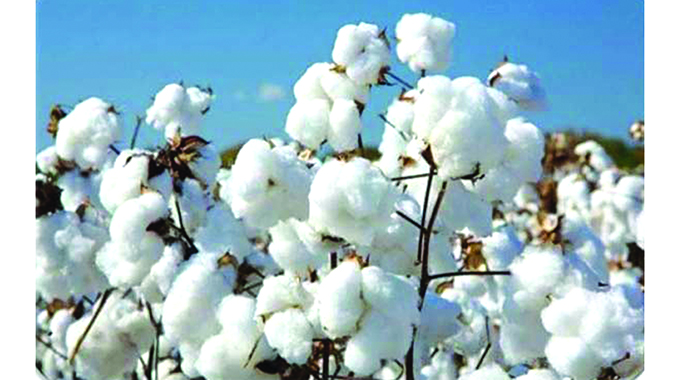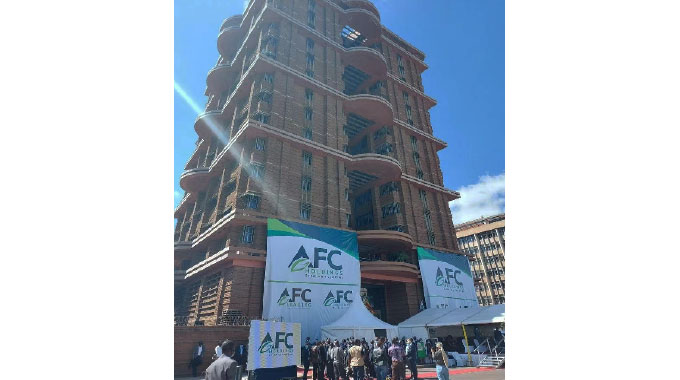‘Time for new cotton financing scheme’

Edgar Vhera Agriculture Specialist Writer
STAKEHOLDERS in the cotton industry have called upon the Government to institute new cotton financing model to increase productivity from the current low of 0,356 tonnes per hectare to possibly the highest ever figure of 1,752 tonnes per hectare of 1980.
Cotton Producers and Marketers Association chairman, Mr Stewart Mubonderi yesterday stressed the need for the country to make good use of the new agro-ecological mapping’s comparative advantage in cotton production areas.
“Taking the good example of improved yields set by maize in the 2020/21 season under the national enhanced agricultural productivity scheme (NEAPS), which resulted in an improved national average yield of 1, 39 tonnes per hectare, the same feat can be achieved in cotton.
“The new financing model can be run in tandem with the Pfumvudza cotton scheme so as not to leave any farmer behind,” said Mr Mubonderi.
Mr Mubonderi observed that due to different resource endowments across the country with high numbers of cotton farmers falling under the less resourced ones, a two-tier system be implemented.
“Farmers who intend to plant cotton on any plot size larger than those for Pfumvudza must be capacitated to approach designated banks offering cotton financial package just like what CBZ Agro-Yield did for maize.
“The new cotton financing scheme must be modelled in such a way that individual farmers are responsible for their debts so that funding will not be a perpetual burden on taxpayers,” he continued.
Mr Mubonderi indicated that there are some farmers with large areas of up to 40ha in areas such as Chitekete who want to increase their cotton hectarage in the forthcoming season.
The joy being exhibited by cotton farmers nationwide as a result of improved on-spot foreign currency payments and the likely switch from maize to cotton especially in agro-ecological regions with a comparative advantage in cotton production is likely to see a boom in cotton hectarage this coming season.
This season, cotton farmers received US$60 per 200kg per bale translating to US$300 per tonne plus Z$32 500 compared to maize at US$90 plus Z$100 000 per tonne.
“We encourage the cotton financing mechanism to incorporate the high yielding Mahyco hybrid seed for improved productivity and production,” went on Mr Mubonderi.
This year’s cotton farmer of the year, Mr Smart Kambanje though acknowledging the high yield potential of hybrid seed indicated that even the locally available varieties can do exceptionally well if accompanied by good agronomic practices.
“I observed that there was not much difference in the yields between imported hybrid seed and locally open pollinated varieties. On one hectare plot I planted Mahyco hybrid and managed to produce 4 560 kg while on the other hectare plot under the local variety SZ9314 I got 4 006 kg.
“If anything, I noticed that the balls from the local variety were heavier at about five grammes compared to those for the hybrid that were around three grammes,” continued Mr Kambanje.
Current cotton input package for one plot
The inputs package for the Presidential Cotton Inputs Scheme includes 20kg planting seed, chemicals that include 1, 5 litres of pyrethroids, 150g of aphicides, 250mls of acaricides and one knapsack sprayer.
The farmers are provided with technical advice throughout the cotton production season, observed Cottco acting chief accounting officer Mr Munyaradzi Chikasha recently.
For the current Pfumvudza concept cotton farmers are encouraged to plant on 0, 25ha to enhance production from a small piece of land. One hectare was the standard that Cottco was using since the scheme began in 2016.
A similar cotton financing scheme can be crafted taking a leaf from the 2020/21 agriculture season where the Government contracted CBZ Bank, as its agent for the Command Agriculture programme. Farmers applied for loans or inputs to CBZ Agro Yield (Pvt) Ltd and repaid the loans to the bank after harvesting. The farmers’ debts to the bank were guaranteed up to 80 percent by the Government.
However, for cotton farmers to take farming as a business and for sustenance of the financial scheme there is need for the beneficiary farmers to be liable for the debts in their own right, not Government.









Comments